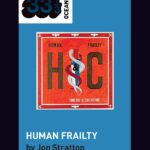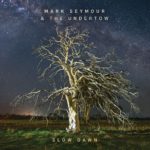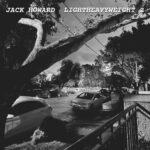Music From the Home Front concert shows vitality and sensitivity can coexist
An article about Home Front, which included Mark Seymour.
Author: Brodie Lancaster, The Guardian.
Date: 26 April 2020.
Original URL: https://www.theguardian.com/music/2020/apr/26/music-from-the-home-front-concert-shows-vitality-and-sensitivity-can-co-exist
Article Text
Music From the Home Front concert shows vitality and sensitivity can coexist
Some performers cracked through the downcast mood in Australian all-star broadcast described as an ‘Anzac Day concert for the fight against Covid-19’
Courtney Barnett performs a stripped-back version of Depreston at the Music From the Home Front concert. Photograph: Channel 9
It won’t be forever, but this is how we watch concerts now. Almost two months into isolation, after weeks of one-off or serialised livestreamed performances popping up across social media, the first all-star event was broadcast on Channel 9 on Saturday night.
Described as “an Anzac Day concert for the fight against Covid-19”, Music from the Home Front had the ambitious goal of honouring returned service people and essential workers of the frontline of the current pandemic, while also putting on a lively show.
The broadcast was presented as the brainchild of the chairman of the Mushroom Group, Michael Gudinski, and his mate Jimmy Barnes, whose son David Campbell shared hosting duties with singers Delta Goodrem and Guy Sebastian and radio host Christian O’Connell.
Behind them in their respective homes were a smattering of Aria statues, jauntily arranged Australian flags and, in O’Connell’s case, a lineup of Sherrins – which only served as a reminder to me of the games of AFL I’d usually be watching this weekend, often squeezing between bodies at the pub or MCG. That, or sweating inside a venue, seeing a band.
On my couch alone, live music is just not quite the same.
The show opened with Ben Lee, who recruited artists Jack River and Lime Cordiale and dozens of his fans and friends to join his rendition of We’re All in This Together, a song written almost 20 years ago which he says has “taken on a new meaning” now.
There was nostalgia sewn into the fabric of many performances, from Barnes’ dialled-down version of Working Class Man to Mark Seymour and James Reyne coming together in front of Seymour’s workout gear in his garage to perform Hunters and Collectors’ Throw Your Arms Around Me and Reckless by Australian Crawl. (Seeing the interiors of musicians’ homes was an ongoing thrill, whether it was Andrew Farriss’s arrangement of kitchenware, Barnes’ leather-bound books or Neil Finn’s loose hard drives strewn across otherwise-empty shelves.)
Even new artists like Tones and I and DMA’S – included on the strength of their respective success in recent years – were relegated to performing ballads from past eras. For Tones, who was filmed in her cavernous living room with a shelf of weighty awards on display from her Dance Monkey success, that meant a cover of Alphaville’s Forever Young.
Coming so soon after Crowded House’s isolated edition of Don’t Dream It’s Over, DMA’S’ cover of Better Be Home Soon had a lot to live up to. It did more than stand up to the original: it proved to be a stand-out moment from the whole night.
When Archie Roach solemnly acknowledged the sacrifices of First Nations diggers in wars – sacrifices, he said, that were “often overlooked” – it was over two hours into the broadcast.
The closest Music From the Home Front got at an acknowledgement of country was a small sign placed into frame for Courtney Barnett’s stripped-back performance of Depreston. The song, which on the surface is about house-hunting, is cast in a different light tonight, as the version of Barnett in the lyrics steps into a house of an elderly past owner, one whose life is imprinted on the walls and who displayed a treasured photograph of a soldier from the Vietnam war.
Soon after came an ensemble performance of Solid Rock. Syncing up across five spaces, Troy Cassar-Daly, Shane Howard, Emma Donovan, Vika and Linda Bull and William Barton infused the broadcast with spirit.
With a three-hour runtime and multiple montages – of wreath-laying ceremonies, candlelight vigils, smiling nurses and workers disinfecting tram stops outside Flinders Street station – the energy of the event often threatened to dip into an inescapably sombre place. Between songs, as I watch an ad featuring a montage of nurses smiling over an earnest song, a friend texts me: “I literally cannot tell the difference between the ads and the show.”
It’s understandably hard to have fun when the message is one of sacrifice and loss, but sensitivity and vitality can co-exist, as proved by a few performers who cracked through the downcast mood.
Isabella Manfredi of the Preatures danced through her performance of Never Tear Us Apart with INXS; Vance Joy’s rendition of Lay It on Me made a star out of an enthusiastic percussionist performing on an upturned bin; and G Flip’s time spent writing and recording her music in her bedroom gave her a leg-up when it came time to perform her breakout single About You in the same space.
A video message from Kylie Minogue – who offered a “virtual hug” – early in the broadcast has me desperately wishing she’d dust off her Golden-era cowgirl hat and sing about going out dancing. With the live music industry in ruins and the seriousness of this moment being impressed onto us – by the hosts and performances and Colgate ads in between – it’s that simple, hopeful sentiment that feels most needed now: “No one wants to stay at home / Nobody wants to be alone … When I go out, I wanna go out dancing.”
Before Barnes closes the show with a family performance of When the War is Over, he and Campbell share a short moment of affection, saying a quick “I love you”. Like all the video calls between parents and their kids right now, it’s a bit pixellated and there’s a short delay, but the message gets through all the same.
Comments
N/A.





